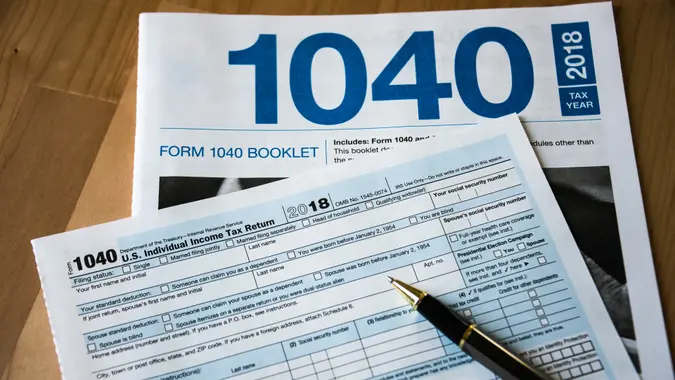7 Ways To Grow Your Tax Refund by $1,000 in A Year

Commitment to Our Readers
GOBankingRates' editorial team is committed to bringing you unbiased reviews and information. We use data-driven methodologies to evaluate financial products and services - our reviews and ratings are not influenced by advertisers. You can read more about our editorial guidelines and our products and services review methodology.

20 Years
Helping You Live Richer

Reviewed
by Experts

Trusted by
Millions of Readers
Your tax refund isn’t just a bigger payday — it’s an opportunity. Whether you’re starting with a few hundred dollars or the full average refund of $3,284, according to the IRS, there are smart, realistic ways to grow your return by $1,000 within a year.
Read More: The Best Tax Deductions and Tax Breaks for 2024-2025
Discover Next: How To Turn Your Tax Refund Into an Extra $1K This Year
Here are seven expert recommendations on ways to grow your tax refund by $1,000.
Adjust Tax Withholdings
“You can claim a lower number of allowances from your paycheck,” said Melanie Musson, finance expert with InsuranceProviders.com. “For example, if you’ve been claiming four allowances, you could change that to two and significantly increase your tax refund.”
You can also request your employer to withhold a certain amount on Form W4, Step 4C, to request additional tax you want withheld each pay period.
“If you get paid weekly, put $19, bi-weekly $38, bi-monthly $42 and monthly $84. Note that this only works if everything else stays about the same in terms of your income, filing status, and dependents,” said Kari Brummond, an accountant with TaxCure, in an email.
Increase Estimated Quarterly Payments
If you’re self-employed, you can increase your estimated quarterly payments to boost your tax refund. “To increase your refund by $1,000, add an additional $250 to your payment every quarter,” Brummond recommended.
Utilize Clean Energy Credits
Going green can pay off during tax season.
“Until 2032, you can get a credit worth up to $2,000 for installing qualified heat pumps, water heaters, biomass stoves or biomass boilers in your home,” Brummond said. The credit is 30% of the equipment, up to $2,000. “You can also claim 30% of the cost of energy-efficient home improvements like new doors or windows, up to $1,200.”
Musson added that you can also purchase an electric vehicle or solar panels. “You’ll receive well over $1,000 next year if you purchase a qualifying green energy product,” she said.
Invest in Your Side Gig
If you have a side gig, invest in a tool to help grow your business.
“For example, if your side gig is lawn care, use your tax refund to invest in an edger,” Musson said. “Then, thanks to your new tool, you can finish lawns more quickly and earn more money.”
Reduce Upfront Tax Credit From the Healthcare Marketplace
You can reduce the upfront tax credit if you purchased health insurance through the Healthcare Marketplace. “To bump up your refund, note a slightly higher income on your marketplace profile,” Brummond said. “Then, you’ll pay a bit more in monthly premiums, but you’ll get more money back when you file your return.”
Claim a Dependent
If you have a qualifying child under age 17, you can claim the child tax credit worth up to $2,000 per child, depending on your income.
You can also claim qualifying relatives on your taxes regardless of whether or not they live with you, as long as you pay for over half of their support and their income is less than $5,050 for the 2024 tax year, according to Brummond.
“Note that there are a few other rules related to this claim. For instance, the person you claim cannot claim any dependents on their tax return, and if they file a return, they must note that they are claimed as a dependent on someone else’s return,” Brummond added.
Work With a Tax Expert
Brummond recommends working with a tax professional if you own a business or work as a freelancer.
“Talk with a tax professional to make sure that you aren’t missing any business deductions,” she said. “Have them go over your bookkeeping and bank accounts and talk with you about capital expenses — aka big purchases. They’ll be able to help you see if you’re leaving any money on the table.”
Editor’s note: Information is accurate as of April 9, 2025.
 Written by
Written by  Edited by
Edited by 

























